William Thomas Whittingslowe

From the Who's Who South Australia Centenary 1936 Year Book
William Thomas Whittingslowe was born in Wales in 1888, he was educated in England and at 18 left for Canada where he worked in various Engineering establishments for 4 years. Whittingslowe moved down to South America, gathering more experience as an engineer.
William Whittingslowe arrived in Australia in about 1912. After working in various states he settled in South Australia and in the 1920's set up his own business, Whittingslowe Engineers Limited specialising in ironworking and knife manufacturing. His firm produced a large amount of bladeware during World War 2. He also designed and built manufacturing equipment for General Motors Holden. He died at Murray Bridge (SA) in 1956.
Whittingslowe Engineers Ltd was one of the two Australian firms to produce the Australian Army Stiletto, also called the Australian Commando Knife.
Australian made stilettos were issued to independent companies (specialist troops who preceded the SASR and the Commando's) in New Guinea and members of Z force and most probably M force as well..
Whittingslowe Engineers Ltd also produced vast quantities of the Australian Army Clasp Knife. The most commonly found WW2 Australian made Clasp Knives are by Whittingslowe.
(I gratefully acknowledge the previous research by Keith Spencer from the Australasian Knife Collectors Club for the information on William Thomas Whittingslowe.)
Whittingslowe was a prolific supplier of knives to the Australian Military during WW2.
Most of the knives that he supplied had a Military acceptance mark of an Arrowhead /I\ marked on them.
- Clasp Knife First Pattern
- Clasp Knife Second Pattern
- Utility Knife
- Stiletto (AKA Commando Knife)
- Machet Long
- Machet Bolo
The Product No: 24 clasp knife is occasionally found with the military marked tin opener and/or acceptance marks. It appears that they must have also been issued from time to time.
The Product No: 24 clasp knife has also been found in the estates of former US servicemen. It is certain that some of these were Private Purchase and this pattern may have been sold to the US Government to supply their soldiers and sailors. However, I have not seen any of these knives with US markings on them.
The Utility Knife was also supplied to the US and these do have US markings on them.
The rest of the Whittingslowe range were for civilian sale. I have not yet found any evidence of any of these knives being obtained by military personnel as private purchase items. I have no evidence as to when they were first produced. Some were registered designs as early as 1943. The earliest advertisement I can find of the range of knives is 15 December 1945.
If anyone has evidence to the contrary I would appreciate being informed, please
The Riddle of the Inspection Mark
Many examples of the knives; including Clasp Knives, Australian Army Utility Knives and Australian Army Stilettos made by Whittingslowe Engineering of Adelaide during WW2 have a mark on them of a Pheon (arrowhead) /I\ and an I.
Because knives issued from Indian armories during the war carried a similar mark, many people have jumped to the conclusion that Whittingslowe knives with the "I" must have been issued from India.
I believe that this assumption is incorrect. I believe that the I /I\ mark on the Whittingslowe knives is an Inspectors Mark, not an Armory Mark. I have come to this conclusion because the presence of the I mark on Whittingslowe knives is far too common.
On the Australian Army Stiletto alone, I find it hard to believe that a knife as rare as it is would have gone all of the way to India to be issued.
Frankly it is not conceivable that this could have have been the case. These knives were made here in Australia for immediate use by our Special Forces.
Why would they have been sent to India? The Indian and British troops were supplied with Indian and British knives. I am not aware of any Australian Army Utility Knives or Australian Army Stilettos turning up in the collection of Chindits or anyone else who fought in that theatre. In fact, I would be extremely grateful if anyone can provide me evidence of Australian knives being used by the Chindits.
Inspectors marks or acceptance marks are quite often found on the knives and other pieces of equipment. I believe it is just coincidence that the Inspectors mark used on Whittingslowe knives was an "I".
When searching antique shops, auction houses, flea markets, garage sales and militaria fairs, a collector keeps coming across other knives by Whittingslowe. Far more often in fact than any other wartime Australian knife manufacturer.
To assist the collector identify these I have compiled this display. Unfortunately most of them are not my knives. However, other collectors have been kind enough to supply me with images of their knives.
Is this a complete collection of the knives that William Whittingslowe produced? Probably not! I suspect that there are several variants of knives not shown and that there are some more that I have not yet found evidence of. What I do know is, that just when I thought I knew them all, another one turns up. So please if you have something produced by Whittingslowe Engineering that I do not have displayed here, please
First pattern military clasp knife
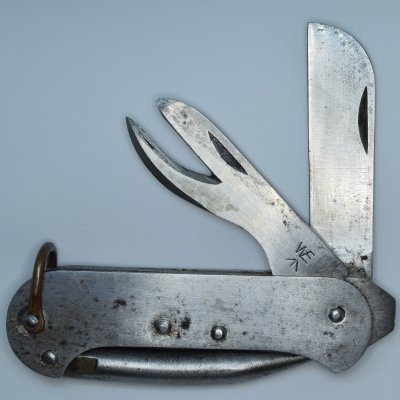
Second pattern military clasp knife
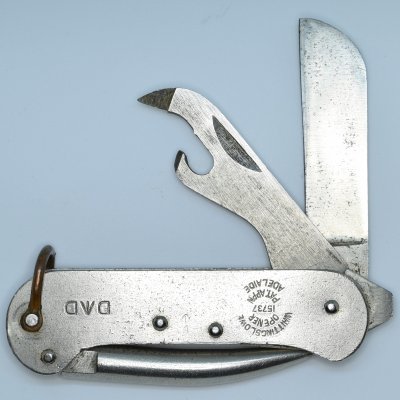
Product No: 24 clasp knife
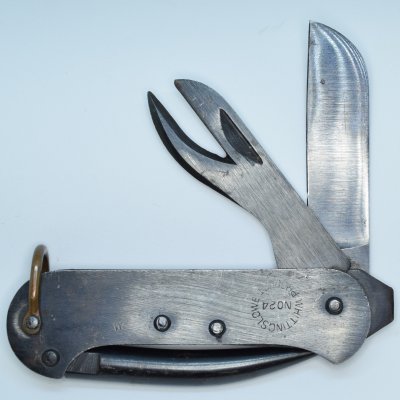
Product No: 47 clasp knife
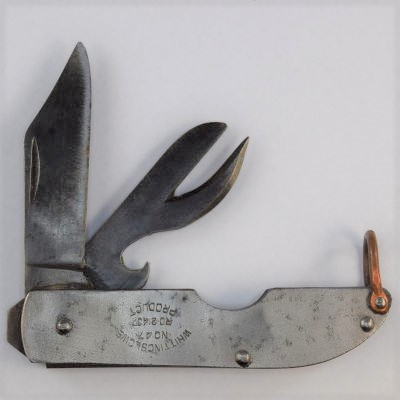
Product No: 40 pocket knife
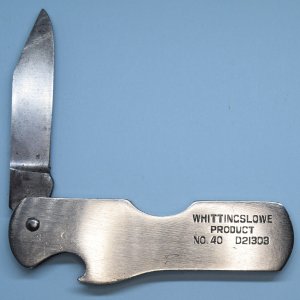
Product No: 41 Stockman's knife
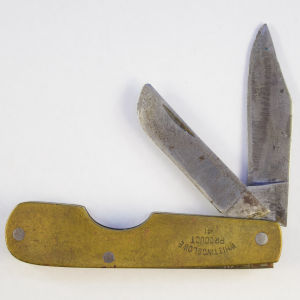
Whittingslowe also produced a version that only has the Clip Point blade. This knife is found with and without a product number.
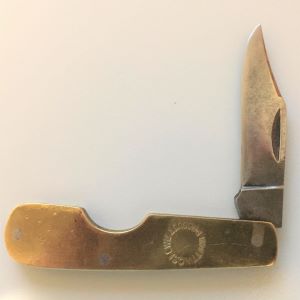
Product No: 43 Combination Tool
Is this Australia's first Multi Tool?

Fixed Blade Knives
Australian Army Stiletto (AKA Commando Knife)

Australian Army Utility Knife

Product No: 45 Hunting Knife

Product No: 46 Hunting Knife with tin and bottle opener RD 21403
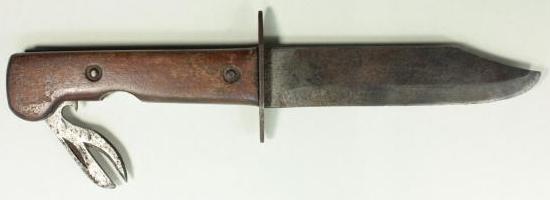
Product No: 70 Knife

Machetes
Australian Army Long Machet

Bolo Machet

Australasian Manufacturer Annual Advertisement
The following is an advert from a publication called The Australasian Manufacturer Annual dated 30th August 1944.

Newspaper Ad
The Melbourne Argus, Saturday 19 January 1946 p 8
